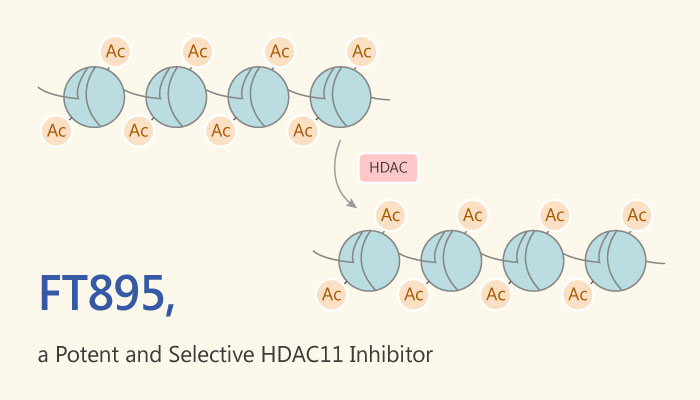 Histone deacetylases (HDACs) control protein acetylation levels. HDACs catalyze the removal of acetyl groups that are responsible for the addition of acetyl groups. The 11 HDAC family members require zinc as a cofactor for deacetylase activity.
Histone deacetylases (HDACs) control protein acetylation levels. HDACs catalyze the removal of acetyl groups that are responsible for the addition of acetyl groups. The 11 HDAC family members require zinc as a cofactor for deacetylase activity.
There are four classes HDACs: class I (HDAC1, HDAC2, HDAC3, HDAC8), class IIa (HDAC4, HDAC5, HDAC7, HDAC9), class IIb (HDAC6, HDAC10), and class IV (HDAC11). HDACs regulate a range of cellular processes including gene expression, transcription factor activity, cell signaling pathways, and protein degradation. As a result, HDACs associate with cancer and other diseases and have been an active area of drug development. Of these, HDAC11 regulates various immune cells, such as antigen-presenting cells, neutrophils, myeloid-derived suppressor cells, T cells, and regulatory T cells. HDAC11 also regulates function in RNA splicing. HDAC11-selective inhibitors have utility for cancer or inflammatory and immunological diseases. In addition to deacetylase activity, HDAC11 also has fatty acid deacylase activity. Herein, Matthew W. Martin, et al identify selective HDAC11 deacetylase inhibitors with cellular activity and pharmacokinetic properties in mice.
FT895 is a highly selective HDAC11 inhibitor.
FT895 shows greater than 1000-fold selectivity against the other 10 members of the HDAC family. Besides, FT895 displays promising cellular activity and pharmacokinetic properties. FT895 is a useful tool to study the biology of HDAC11. Based on its overall in vitro profile, FT895 is advanced to mouse pharmacokinetic studies to measure its suitability in vivo. The pharmacokinetic properties of FT895 are assessed in male Balb/c nude mice following both intravenous and intraperitoneal dosing. FT895 displays a moderate clearance and high volume of distribution. Moreover, when dosed intraperitoneal, FT895 has an improved exposure.
All in all, FT895 is a potent and selective inhibitor of HDAC11, which makes its potential use as a therapeutic target for oncology and inflammation indications.
Bioorg Med Chem Lett. 2018 Jul 1;28(12):2143-2147.